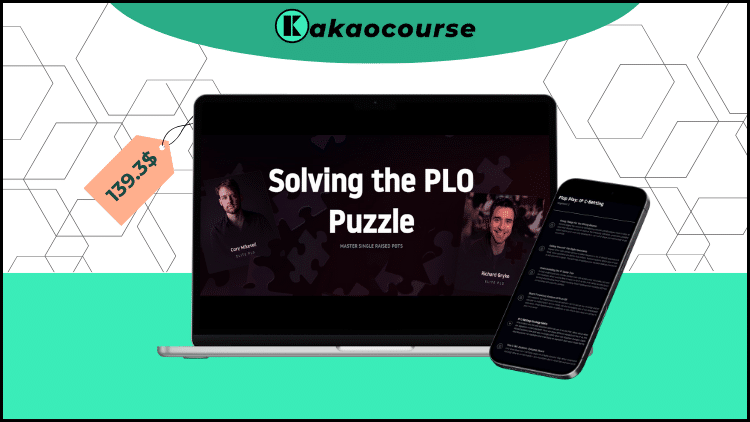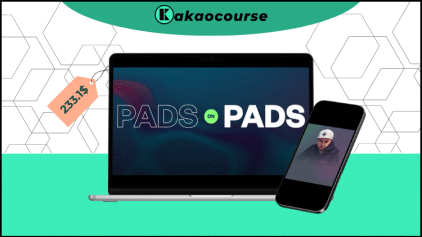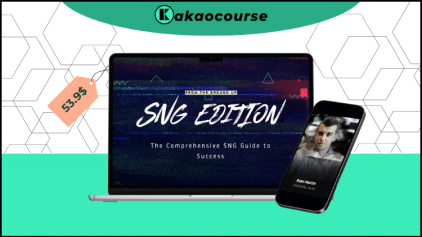Immediately Download Solving the PLO Puzzle – Master Single Raised Pots by Cory Mikesell & Richard Gryko
Check content proof, now:
What Is PLO Puzzle?
PLO Puzzle is a structured series designed to give players a complete grasp of one specific area of Pot Limit Omaha. In this program, Richard and Cory take an in-depth look at the dynamics of single-raised pots.
By narrowing the focus to one area of the game, the course is able to break down situations in unmatched detail. Nothing is glossed over—every hand type and scenario is carefully analyzed to sharpen your edge. The teaching combines technical breakdowns with broader, conceptual lessons so you can understand strategies from multiple perspectives. To wrap it all up, the theory-in-practice sessions demonstrate how to apply these strategies to real in-game hands.
ELITE PLO
- Cory Mikesell
- Richard Gryko
Who Is This Course For?
This training was built specifically for serious Pot Limit Omaha players. Whether you’re trying to climb out of lower stakes or are already comfortable at mid-to-high stakes, the lessons here will boost your game. The material was distilled from hundreds of simulations and organized into a digestible system that any committed player can follow. Even elite pros will find new insights, but the concepts are explained clearly enough that newer players won’t feel lost. Complex ideas are broken down into straightforward explanations, making them both practical and easy to absorb.
Doesn’t Most of Our PLO Winrate Come From Big Pots?
Many players mistakenly believe that only large pots—like those in 3-bet or 4-bet situations—drive winrates. In reality, the majority of hands we play are smaller pots, and while errors here may seem minor in isolation, repeating the same mistakes across countless hands compounds into significant losses.
Mastering these frequent, lower-stake spots is vital. Even small, checked-down pots contribute heavily to your overall profitability. Plus, most opponents underestimate these situations, leading them to make recurring mistakes. By tightening up your game where others are weakest, you’ll create one of the easiest paths to increasing your winrate.
How Much Content Is Included?
The course contains 46 video lessons, with a total runtime of just under 17 hours.
Are There Any Additional Materials?
Absolutely. Alongside the videos, you’ll gain access to:
-
100+ quizzes with detailed explanations, so you can check your understanding and track progress.
-
Board frequency sheets that map out strategy adjustments for different board types. These are particularly useful for tricky scenarios such as paired boards or blind-vs-blind battles, where C-betting ranges from the small blind vary dramatically.
Flop Play: IP C-Betting
Segment 1
- Doing Things for the Wrong Reason
Richard starts by pointing out common flaws in player thinking. Are you making decisions based on initiative, protection, fear of pressure, “finding out where you’re at,” or simply because something looks +EV? Each of these reasons can lead to poor decisions if not applied with the right context.
17:15 - Asking Yourself The Right Questions
Most players follow a set of default questions when making decisions. Some questions, however, lead to sharper choices than others. Richard shows which types of questions improve clarity and help you think faster and more effectively at the table.
20:13 - Understanding the IP Game Tree
To see why certain hands act the way they do, you need to understand the bigger picture. What does it mean to be the preflop raiser in position? What are the trade-offs of c-betting versus checking back? Richard explains these fundamentals so you can judge the value of different lines with specific combos.
17:38 - Board Frequency Analysis BTN vs BB
Cory explains why understanding c-bet frequencies is critical and how they influence overall strategy. He also introduces downloadable board frequency charts that, together with this lesson, become a valuable reference tool for your PLO study.
07:15 - IP C-Betting Strategy Shifts
Being the preflop raiser in position isn’t limited to BTN vs BB. How does the approach change if you’re UTG, or when stack sizes vary? Richard shows how strategy shifts depending on the setup, and adds exploitative adjustments — such as playing against opponents who never lead the flop.
14:44 - Flop C-Bet Analysis: Dynamic Board
Cory breaks down c-betting ranges on dynamic textures. Which features push you toward betting? Why do some hands fit a c-bet while others don’t? This session explains the underlying logic.
20:48 - Flop C-Bet Analysis: Lockdown Board
Lockdown boards demand a very different approach from dynamic boards. Cory explains how and why strategy changes in these more static situations.
16:29 - Flop C-Bet Analysis: Paired Board Part 1
Paired boards are notoriously difficult to play. In part one, Cory focuses on strong hands such as trips and overpairs and how to c-bet them correctly.
13:59 - Flop C-Bet Analysis: Paired Board Part 2
The follow-up explores how to handle the rest of your range on paired boards. Cory covers draws and air, explaining how to pick the right candidates for betting without overdoing it.
09:22 - Flop C-Bet Analysis: Monotone
Monotone boards don’t show up often, but they’re tricky. Cory reviews how to build c-betting ranges in these spots so you’re prepared when they appear.
11:39 - Facing A Check Raise On The Flop
Knowing when to c-bet is one thing, but facing a check-raise adds a new challenge. How wide should you continue? What if your opponent rarely bluffs? How do you construct a 3-bet range? Richard walks through these key decisions.
17:17
Flop Play: OOP as the Non PFR
Segment 2
- Facing IP Flop Aggression
Now that you understand the goals of the in-position player when c-betting, Richard explains how to counter effectively when you’re out of position. He introduces “Forcing” and “Absorbing” hands — concepts that help you define your objectives and play more strategically.
27:21 - What do we Get, Need and Want
Richard presents a simple three-step model to guide your decisions, building on earlier lessons to create a clear and consistent thought process in-game.
13:32 - Donking the Flop
Donk betting is often overlooked — many think about it, few do it well. Richard shows when to donk, which boards favor it, and what types of hands to use. In some cases, the OOP player should donk as much as 60%. He explains exactly where and why.
37:05 - Tough Boards vs Tight Ranges
Picture calling an UTG raise and seeing an AK9 suited flop. It looks terrible for you — but did you know your check-raise frequency here is actually higher than against BTN? Richard explains why and how to defend in these difficult spots.
09:07
Flop Play: OOP as the PFR
Segment 3
- Out of Position as the Preflop Raiser: Introduction
Cory introduces common OOP PFR situations, comparing scenarios and explaining how often to c-bet depending on board texture and context.
11:05 - Board Frequency Analysis: CO vs BTN
Richard examines c-bet frequencies for CO vs BTN, while also showing how to get the most out of frequency sheets in your study process.
14:45 - Out of Position as the Preflop Raiser: A Closer Look
Richard expands on Cory’s introduction, highlighting the essential principles for playing this situation well.
10:44 - Out of Position as the Preflop Raiser: High Frequency C-Bets
Some hands qualify as frequent c-bets. Richard explains which types to choose and what traits to look for when deciding.
29:14 - Out of Position as the Preflop Raiser: Dynamic Flop
Cory analyzes a dynamic flop OOP as the raiser, focusing on check-calling and check-raising. He highlights some surprising bluff candidates.
13:29 - Out of Position as the Preflop Raiser: Paired Flop
Paired boards play differently: some invite no check-raises, others a significant number. Richard breaks down when and why, with a focus on balance between value and bluffs.
16:48 - Out of Position as the Preflop Raiser: A-High Flops
Ace-high boards are among the most c-bet heavy. Still, you can’t bet everything. Richard shows which hands bet and which should check.
10:53 - OOP as the PFR and OOP vs the PFR: Similarities and Differences
Richard closes the module by comparing OOP as PFR with OOP vs PFR. He shows the overlaps and differences so you can apply the right logic in each case.
15:48
Turn Play
Segment 4
- Double Barreling the Turn Part 1
Many players struggle with double barrels, often betting too merged or too infrequently. Richard shows how to polarize properly, covering brick turns, paired top cards, and straightening textures.
23:19 - Double Barreling The Turn Part 2
This session looks at flush turns and paired boards, helping you refine your double-barrel approach.
19:26 - Defending vs Double Barrels
Cory shifts perspective to defending against double barrels. He explains which hands form the bottom of your calling and check-raise ranges, and how to add bluffs appropriately.
17:37 - Delay C-Betting The Turn
With a polar flop strategy, many hands fit a delayed turn bet. Cory reviews different turn textures and highlights recurring ideas.
17:48 - Probing Part 1: Dynamic Turns
Richard introduces probing, starting with dynamic turns. He clarifies which value hands to bet, which to check-raise, and how to choose bluffing candidates.
24:52 - Probing Part 2: Straightening Turns
In straightening situations, splitting your range can be powerful. Richard explains why and how to apply this technique.
37:04 - Probing Part 3: Paired and Flushing Turns
The final probing lesson covers flush and paired turns, with emphasis on bet sizing and combo-specific strategies.
34:13 - Defending vs Probes
Good probe defense begins with a solid flop check-back range. Richard explains how to identify thresholds for calling, folding, and raising — even showing spots where merged raises can be profitable.
30:54 - Turn after Flop Check Raise
Turn play after a flop check-raise is one of the toughest situations in PLO. Richard reviews ranges, frequencies, and introduces a frequency sheet to guide your study.
36:17 - Equity Retention
Often, after c-betting frequently OOP, you reach the turn with many medium-strength hands. Richard introduces the “equity retention bet” to prevent over-folding these holdings.
16:48 - Leading the Turn Part 1
Leading turns is an underused but important strategy. Richard explains which runouts justify building a leading range.
13:22 - Leading the Turn Part 2
Continuing the discussion, Richard specifies which hand types work best as leads once you’ve identified the right runouts.
12:12
River Play
Segment 5
- Understanding Bet Sizings
Richard explains river bet sizing — when to go small, medium, or large — and why solvers shift between them depending on context.
31:07 - Differences Between IP/OOP River Strategy
River play changes dramatically depending on position. Richard illustrates how and why IP and OOP strategies diverge.
17:52 - River Triple Barrel Value Part 1
Cory examines triple-barrel strategy across a variety of runouts — bricks, straights, top-pair, bottom-pair, and flushes.
18:10 - River Triple Barrel Value Part 2
Continuing from part one, Cory covers additional runouts not discussed earlier.
09:00 - Value Threshold Checked Down Pots
Small pots deserve as much focus as big ones. Richard shows how to extract thin value in checked-down situations, often missed in real play.
10:31 - Value Threshold After Missed Turn C-Bet
Richard explains how to evaluate thin value opportunities on the river after betting flop but checking back the turn.
23:46 - Value Threshold After Delayed C-Bet
The final threshold lesson covers spots where you check back flop, then delayed c-bet the turn. Richard explains how far you can push for thin value.
17:16 - Facing Aggression on the River
River defense can be tough with many borderline bluff-catchers. Richard outlines the principles for choosing the right hands to continue with.
27:46
Theory In Practice
Segment 6
- Theory In Practice Part 1
Cory and Richard analyze real hand histories to apply theory in action. Topics include defending vs a tough turn probe, OOP as PFR, and blind defense against a tighter raiser with flop-leading spots.
60:18 - Theory In Practice Part 2
The duo review hands involving bluff-catching against aggression on paired boards, turn probes with paired textures, and playing straights on flushing turns — including whether to go for two streets of value.
52:40 - Theory In Practice Part 3
In the final segment, they explore c-betting IP and deciding whether to double barrel, bluff-catching after checking back, and navigating blind-vs-blind scenarios with tricky wraps and medium-strength hands.
55:35












Reviews
There are no reviews yet.